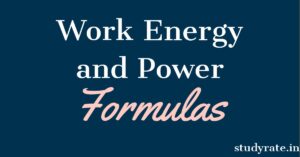Here we will provide you the 50+ MCQ Questions of The p – Block Elements for NEET-UG. Surface Chemistry is the chapter 7 in Class XII or Class 12 Chemistry NCERT Unit The p – Block Elements NEET (conducted by NTA) is based on the NCERT book.
These 50+ MCQ questions are selected by the experts of studyrate.in and these are more difficult questions, which will help you to better understand The p – Block Elements NEET MCQ Questions with Answers.
The p – Block Elements NEET MCQ
Which of the following elements is a metalloid?
A) Boron
B) Silicon
C) Germanium
D) All of the above
Answer: D) All of the above
Which of the following elements is a halogen?
A) Oxygen
B) Chlorine
C) Fluorine
D) Nitrogen
Which of the following elements has the highest electron affinity?
A) Nitrogen
B) Oxygen
C) Fluorine
D) Chlorine
Which of the following elements has the highest electronegativity?
A) Oxygen
B) Chlorine
C) Nitrogen
D) Fluorine
Which of the following elements is not a noble gas?
A) Helium
B) Neon
C) Argon
D) Xenon
Which of the following elements is a metal?
A) Nitrogen
B) Oxygen
C) Sodium
D) Chlorine
Which of the following elements is a nonmetal?
A) Boron
B) Silicon
C) Carbon
D) Magnesium
Which of the following elements has the highest melting point?
A) Carbon
B) Silicon
C) Germanium
D) Tin
Which of the following elements is a semiconductor?
A) Boron
B) Aluminum
C) Carbon
D) Copper
Which of the following elements has the highest ionization energy?
A) Carbon
B) Nitrogen
C) Oxygen
D) Fluorine
Which of the following is a common use of boron in industry?
A) As a semiconductor in computer chips
B) As a dopant in solar cells
C) As a component in high-strength alloys
D) As a reducing agent in metallurgy
Which of the following is true about the Group 14 elements?
A) They all have the same number of valence electrons
B) They all have the same electron configuration in their outermost shell
C) They all form covalent bonds with other elements
D) They all have the same electronegativity
Which of the following statements about nitrogen is true?
A) It is the most abundant gas in Earth’s atmosphere
B) It is a highly reactive metal
C) It is used as a fuel in rocket engines
D) It can form a triple bond with itself
Which of the following is not a common use of oxygen in industry?
A) As a component in steel production
B) As a fuel for combustion engines
C) As a component in water treatment processes
D) As a refrigerant in cooling systems
Which of the following is true about the halogens?
A) They have low electron affinities
B) They have high ionization energies
C) They are highly reactive nonmetals
D) They have low melting and boiling points
Which of the following statements about carbon is true?
A) It is a highly reactive metal
B) It can form single, double, and triple bonds with other elements
C) It is only found in its elemental form in the Earth’s crust
D) It has a low boiling point
Which of the following is a common use of phosphorus in industry?
A) As a component in fertilizers
B) As a semiconductor in computer chips
C) As a reducing agent in metallurgy
D) As a fuel in rockets
Which of the following statements about the noble gases is true?
A) They all have complete outer electron shells
B) They are highly reactive with other elements
C) They have low ionization energies
D) They are all liquids at room temperature
Which of the following elements is a metalloid?
A) Nitrogen
B) Carbon
C) Arsenic
D) Sulfur
Which of the following statements about the chalcogens is true?
A) They all have the same number of valence electrons
B) They are all highly reactive nonmetals
C) They all have low melting and boiling points
D) They can form compounds with other elements in a variety of oxidation states
Which of the following statements about the boron family (Group 13) is true?
A) All elements in the family have the same valence electron configuration
B) All elements in the family are metals
C) The family includes both metals and nonmetals
D) The elements in the family have a low melting point
Which of the following statements about sulfur is true?
A) It is a highly reactive metal
B) It is only found in its elemental form in the Earth’s crust
C) It can form a wide range of compounds with other elements
D) It has a low boiling point
Which of the following statements about the carbon family (Group 14) is true?
A) The elements in the family have similar chemical and physical properties
B) The family includes both metals and nonmetals
C) The elements in the family have a high electronegativity
D) The family includes only gases
Which of the following statements about nitrogen is true?
A) It is a metalloid
B) It has a low boiling point
C) It is only found in its elemental form in the Earth’s crust
D) It can form compounds with other elements in a variety of oxidation states
Which of the following statements about fluorine is true?
A) It is a metal
B) It has a low electron affinity
C) It is a highly reactive nonmetal
D) It has a low melting point
Which of the following statements about the noble gases is true?
A) They have low melting and boiling points
B) They are all highly reactive with other elements
C) They are all gases at room temperature
D) They can form compounds with other elements
Which of the following is a common use of phosphorus in industry?
A) As a reducing agent in metallurgy
B) As a fuel in rockets
C) As a component in fertilizers
D) As a semiconductor in computer chips
Which of the following statements about the halogens is true?
A) They have low ionization energies
B) They are all metals
C) They are all solids at room temperature
D) They form salts when they react with metals
Which of the following statements about silicon is true?
A) It is a metal
B) It is a highly reactive nonmetal
C) It is used as a semiconductor in computer chips
D) It has a low electronegativity
Which of the following statements about arsenic is true?
A) It is a metalloid
B) It is a highly reactive metal
C) It has a low electron affinity
D) It is only found in its elemental form in the Earth’s crust
We hope there NEET MCQ of Class 12 The p – Block Elements will help you to score an excellent rank in NEET-UG. If you have any queries feel free to write in the comments section. We at Study Rate are always ready to serve our students.


